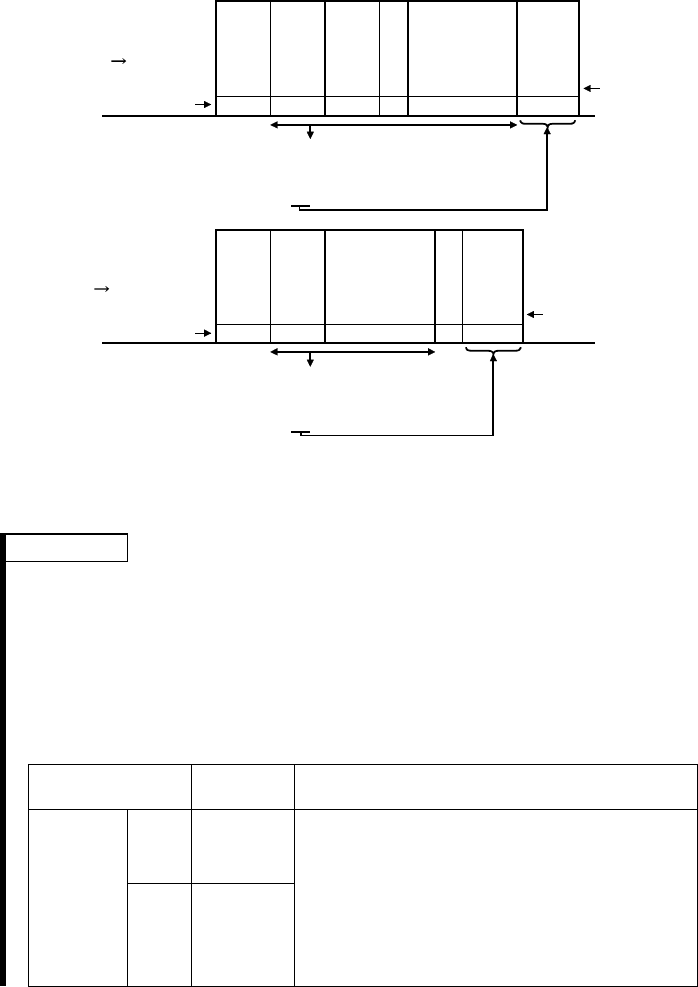
124
7) Sum check code
The sum check code is 2-digit ASCII (hexadecimal) representing the lower 1 byte
(8 bits) of the sum (binary) derived from the checked ASCII data.
E
N
Q
1
0 1E1 07ADF4
H05 H30H31 H31H45H31 H30H37 H41 H44 H46 H34
S
T
X
0 117 0
30
H02 H30 H31 H37H31 H37 H30 H03
H33 H30
E
T
X
7
Sum
check
code
Sum
check
code
Binary code
(Example 1)
Computer Inverter
ASCII code
(Example 2)
Inverter Computer
ASCII code
Binary code
H
1F4
=
H
30
H
31
H
45
H
31
H
31
H
30
H
37
H
41
H
44
++++++++
H
130
=
H
30
H
31
H
31
H
37
H
37
H
30+++++
Sum
Sum
Station
number
Read time
Station
number
Data
Waiting
time
Instruction
code
8) Error code
If any error is found in the data received by the inverter, its definition is sent back to
the computer together with the NAK code. (Refer to page 128.)
REMARKS
1. When the data from the computer has an error, the inverter will not accept that
data.
2. Any data communication, e.g. run command, monitoring, is started when the
computer gives a communication request. Without the computer's command, the
inverter does not return any data. For monitoring, therefore, design the program
to cause the computer to provide a data read request as required.
3. When accessing the parameter settings, data for link parameter expansion
setting differs between the parameters as indicated below:
Instruction
Code
Data
Read H7F
Link
parameter
expansion
setting
Write HFF
H00: Pr. 0 to Pr. 99 can be accessed.
H01: Calibration parameters C1 to C7 (Pr. 900 to
Pr. 905) and communication parameter n13
(Pr. 145) can be accessed.
H03: Communication parameters n1 to n12
(Pr. 331 to Pr. 342) can be accessed.
H09: Communication parameters n14 to n17
(Pr. 990 to Pr. 993) can be accessed.


















